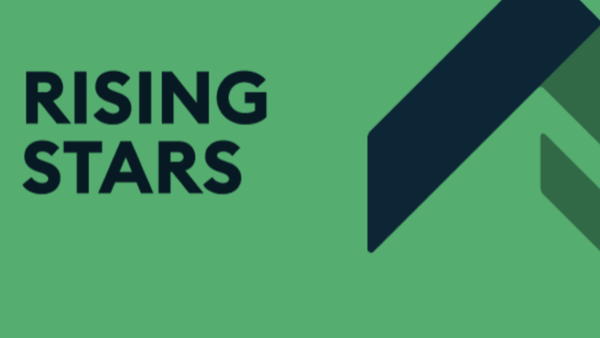Evolving your Hiring Processes as your Company Scales from Seed to Series C

As your tech company’s priorities shift and evolve at each funding milestone, the hiring processes you put in place need to adapt to these changes as well.
The hiring decisions you make after your initial round of funding will be vastly different to the ones you make when your company has progressed beyond Series A. The people you employ will have different functions, or require different skill sets.
This could be as simple as the immediate need to fill the role, versus experience to do the job while managing a bigger team.
The bottom line? The people you hire at each of these stages could make all the difference, especially if you want to reach the next milestone in your company’s scaling journey.
Seed funding: Dipping your toes in the talent pool
As you move from securing your initial round of funding, you transition from a focus on product/market fit, to nurturing the company itself. Before this stage, Sam Altman, CEO at OpenAI notes here that there’s very little need for management and structure when it comes to hiring, and that's not necessarily a bad thing.
Now, as you acquire investment, the focus needs to be on getting the best talent for the job at the lowest price. The key factor in deciding whether to hire or not hire, is assessing the potential impact the candidate will have at this point in the company’s roadmap, as outlined in this article. You might want an in-house designer for example, but ask yourself - will this fulfill immediate needs the company’s facing at the moment.
The Head of Talent at Harver, spells it out like this: “Impact hires share a defining trait regardless of their seniority level or experience: A great cultural fit for the company whose contributions are going to yield compounding results and resonate deeper within the organisation than a standard hire-to-fill-a-role.”
As you’re competing with bigger, more established companies in the market, the whole company (no matter how small at this stage) needs to get involved.
It’s fair to say that the hiring strategy is personalised, ad-hoc and dependent on who’s in your (team’s) professional network. Someone, may know someone, who’s perfect for the role in question. Referrals are effective, low cost and quick. The wider team can also help with defining specific job descriptions, to attract highly relevant candidates.
Once you know what roles need to be filled, and how many new hires are required, you can then build an assessment and interview process.
Ask yourself:
- What skills are you evaluating?
- Who needs to be in the room to evaluate candidates?
- Do you need to set out practical tasks for the candidate to complete?
You need to ensure the candidate can match the fast pace and spontaneity of an early stage scaleup.
Series A: Taking your talent hunt to the next level
As noted here, “Your Series A funding is a validation of your vision, your early-stage product, and your marketplace reception.”
Your new hires at this stage need to bring immediate flexibility as well as long-term capability to take you to Series B. It’s also the time to hire specialists rather than just (and perhaps what you did up until now) highly skilled multitaskers or generalists, as highlighted in this best practice guide.
Now would be the right time to bring a digital marketer on board for example, or people with highly relevant sales experience. With a greater influx of capital and a rapid-growth stage going underway, it’s time to switch from an ad-hoc network approach to start building a proper strategy and allocation of budget.
When developing a scalable recruitment plan, consider the following steps:
- Creating a recruitment calendar: This will help you anticipate what you need to achieve in terms of hiring in the following quarter 2 or 3 for example.
- Invest in technological solutions to streamline hiring at a greater scale. For example, investing in an ‘applicant tracking system’, or candidate screening tools to help automate and streamline the process.
- Devote time and budget to post on job boards and fairs.
- Start developing your employer brand: What is your value proposition as an employer? What perks and incentives can you offer?
Ultimately, once you’ve reached the Series A mark, you’re transitioning from a highly effective smaller team, to a bigger team that can help you navigate the market, weather change and uncertainty, as well as buy into your company culture and values.
Series B & C: Hiring becomes serious business
Series B and C are major milestones in a tech company’s lifecycle. As noted here, it signifies a transition from innovation to optimisation. For that, new hires now need to bring high-level expertise, seniority and experience to manage bigger teams and meet the demands of the business.
At these stages, hiring needs to be highly curated, and in order to do that, a full-time recruiter (and possibly recruiting team) is often the best option, as Anne Caron, an ex-Googler and founder of Trellis Asia discusses here.
At this critical point she notes, there’s very little room for error, so honing in on the right people for the job is paramount. The benefit of a recruiter or hiring team for this purpose means interviewers can be trained, and strategy can be moulded according to the company’s specific needs and challenges.
Whilst in previous stages everyone, or many people pitched in, it now needs to become a streamlined process. Anna Caron also highlights that interviews conducted only by the hiring manager is a big mistake, rather a full-fledged process is needed and someone needs to be in charge of each step in the process. She outlines the ideal interview structure:
- The recruiter interviews potential employees to assess them from an overall perspective.
- The second interview with company member(s) is to assess technical fit. Is the candidate capable of fulfilling the role?
- The third stage of the interview process is to gauge how company culture aligns with the potential candidate, and this could be conducted by an unrelated department to keep the focus on culture, rather than specific job role.
When it comes to crossing Series C, companies are entering a phase of hypergrowth. This could mean doubling the headcount, opening new offices, implementing HR processes and finding the right managers.
Evolving from Seed to Series C entails developing a hiring strategy you can build upon incrementally. Whilst initially the process is less structured and relies on network, by the time you reach Series C - you should have an established employer brand, a more well-known reputation, and an efficient step by step approach to recruiting and retaining stellar talent.


